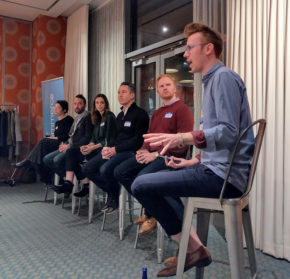If you’re selling a product or service and need to find customers fast, it’s a 100% certainty that somewhere on the internet, your target audience (or at least part of it) is waiting for you…it’s just a matter of finding it. But, how can a vendor go about identifying the best websites, forums or other properties to partner with to market their wares?
Here are some important steps to make sure your product is being served to the right audience at the right time:
Use your own market research — or start doing it
Ideally, you’ll have very specific customer profiles built out to develop marketing campaigns on, but not every business has this fleshed out…or even started. By identifying your ideal customers, you can strategically plan how to reach them and turn them into customers. Keep in mind that your “best” customer is not necessarily the most common type of customer you have or even the customer you may be marketing to right now — it’s the customer who is the easiest to attract and convert, the most low-maintenance once he/she is a customer, the least costly to retain, etc. In other words, it’s the customer who will bring you the most amount of money while costing you the least. Things to consider when figuring out who your best customers are:
- how old are they?
- where do they live?
- how much money do they make?
- what kind of work do they do?
- what do they like to do for fun?
- are they frugal or big spenders?
Think about the big differentiators and common threads in your audience when building your profile — it will simplify everything a lot and help you understand your customer base even further.
Find a content channel with a matching audience
OK, you’ve got a great picture of who your best customers are — now it’s time to find a publisher that has plenty of people just like that.
This can sometimes be very straightforward. If you run a company that makes tents, for example, looking at websites and online communities dedicated to the outdoors is an obvious first step. But for many companies, the solution may be more nuanced. Imagine you’re a luxury watch brand — watch enthusiasts are an obvious target, but that market is too small to focus on exclusively. So where else can a luxury watch brand reach their target customers on a regular basis? The answer should be fairly obvious to anyone who’s ever been in an airport and flown in a plane — airport terminals and inflight magazines are chock full of ads for high-end luxury brands. Why? Because the most frequent flyers are typically businesspeople with annual incomes much higher than average.
Find a revenue share and promotional plan that works for you
Once you’ve started talking to a well-matched publisher, you’ll obviously need to figure out how the money is going to be shared. All the publicity and promotion in the world won’t help if you’re giving up too much of the purchase price. There are two main factors that should factor into the equation here – the size of the partner’s audience and how much promotion will be involved.
The natural inclination may be to think that audience size shouldn’t matter, as larger sites should make more money because they will move more product in proportion, but the reality is that large publishers can demand a larger percentage of each sale based on the potential exposure and massive volume they can expect to provide. This makes sense – would you rather have 50% of $10,000 in sales or 40% of $100,000? Promotion is pretty straightforward. If a publisher is willing to include posts on social networks and emails to their subscribers, for example, it can reasonably expect to receive more upside than a publisher who is just doing the bare minimum.
Take what you’ve learned and apply it to your next campaign
Once you’ve run your campaign and taken stock of your results, it’s time to analyze your experience and figure out what you want to do next. Best case scenario, you’ll have had a great time running your campaign and will already be working on the next one with the same partner. Even if things didn’t go 100% according to plan, don’t fret — you’ll have learned a lot and the next time you partner up on a co-promotion deal, you’ll know how to do it right.

